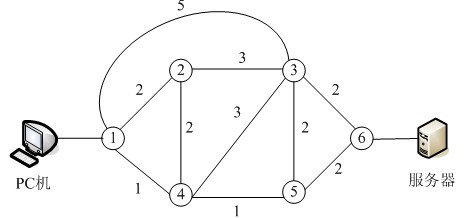网络系统设计过程中,逻辑网络设计阶段的任务是( )。
本题考查网络规划和设计的基础知识。网络逻辑设计阶段要根据网络用户的分类和分布,选择特定的技术,形成特定的网络结构。网络逻辑结构大致描述了设备的互联及分布情况,但是并不涉及具体的物理位置和运行环境。逻辑设计过程主要由确定逻辑设计目标、网络服务评价、技术选项评价及进行技术决策4个步骤组成。
逻辑网络设计工作主要包括网络结构的设计、物理层技术选择、局域网技术选择与应用、广域网技术选择与应用、地址设计和命名模型、路由选择协议、网络管理和网络安全等内容。
The metric assigned to each network depends on the type of protocol. Some simple protocol, like RIP, treats each network as equals. The( )of passing through each network is the same; it is one( )count. So if a packet passes through 10 network to reach the destination, the total cost is 10 hop counts. Other protocols, such as OSPF, allow the administrator to assign a cost for passing through a network based on the type of service required. A( )through a network can have different costs (metrics). For example, if maximum( )is the desired type of service, a satellite link has a lower metric than a fiber-optic line. On the other hand, if minimum( )is the desired type of service, a fiber-optic line has a lower metric than a satellite line. OSPF allow each router to have several routing table based on the required type of service.
问题1选项
A.number
B.connection
C.diagram
D.cost
问题2选项
A.process
B.hop
C.route
D.flow
问题3选项
A.flow
B.window
C.route
D.cost
问题4选项
A.packet
B.throughput
C.error
D.number
问题5选项
A.delay
B.stream
C.packet
D.cost
在SNMP中,管理进程查询代理中一个或多个变量的值所用报文名称为( ),该报文的缺省目标端口是( )。
问题1选项
A.get-request
B.set-request
C.get-response
D.trap
问题2选项
A.160
B.161
C.162
D.163
报文摘要算法MD5的输出是( )位,SHA-1的输出是( )位。
问题1选项
A.56
B.128
C.160
D.168
问题2选项
A.56
B.128
C.160
D.168
网络由6个路由器互连而成,路由器之间的链路费用如下图所示,从PC机到服务器的最短路径是( ),通路费用是( )。
问题1选项
A.1→3→6
B.1→4→5→6
C.1→4→3→6
D.1→2→4→5→6
问题2选项
A.4
B.5
C.2
D.6
通过ADSL访问Internet,在用户端通过( )和ADSL Modem连接PC机,在ISP端通过( )设备连接因特网。
问题1选项
A.分离器
B.电话交换机
C.DSLAM
D.IP路由器
问题2选项
A.分离器
B.电话交换机
C.DSLAM
D.IP路由器
利用SDH实现广域网互联,如果用户需要的数据传输速率较小,可以用准同步数字系列(PDH)兼容的传输方式在每个STM-1帧中封装( )个E1信道。
网络系统设计过程中,逻辑网络设计阶段的任务是( )。
大型局域网通常划分为核心层、汇聚层和接入层,以下关于各个网络层次的描述中,不正确的是( )。
网络系统生命周期可以划分为5个阶段,实施这5个阶段的合理顺序是( )。
2009年发布的( )标准可以将WLAN的传输速率由54Mb/s提高到300~600Mb/s。